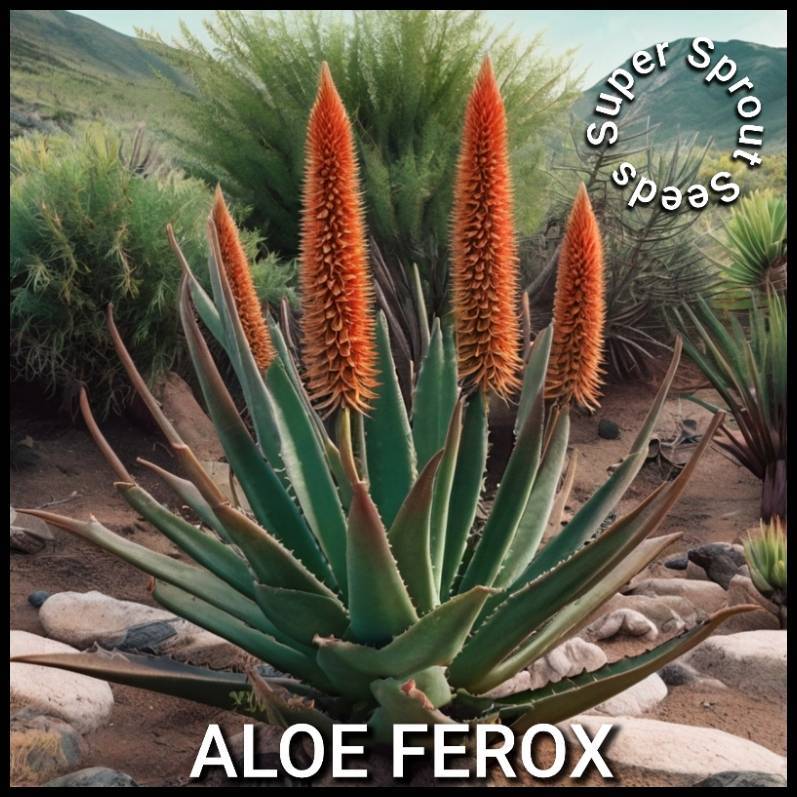
| Main centres: | 1-3 business days |
| Regional areas: | 3-4 business days |
| Remote areas: | 3-5 business days |
Aloe ferox, commonly known as bitter aloe, is a species of flowering plant in the family Asphodelaceae. This woody aloe is indigenous to southern Africa. It is one of several Aloe species used to make bitter aloes, a purgative medication, and also yields a non-bitter gel that can be used in cosmetics.
Description
Aloe ferox is easily recognizable by its impressive size and form.
Leaves: These large, fleshy, blue-green leaves are arranged in a dense rosette at the top of the stem. Their edges and sometimes their upper and lower surfaces are lined with prominent reddish-brown spines, which gave rise to the Latin name ferox, meaning "fierce". The dead leaves often persist on the trunk, forming a skirt-like layer.
Stem: The plant has a single, woody trunk that can grow 23 meters (6.510 feet) tall, and in some cases, even taller.
Flowers: During the winter months (MayAugust in the Southern Hemisphere), it produces a striking, candelabra-like flower-head with multiple branches. The numerous tubular flowers range in color from a bright yellow-orange to a vibrant red. They are rich in nectar and attract various birds and insects.
Habitat and distribution
As one of the most widely distributed aloe species, Aloe ferox is found across a wide range of habitats in Southern Africa.
Geographic Range: Its natural range stretches from the southwestern Cape through to southern KwaZulu-Natal in South Africa and extends into parts of Lesotho.
Habitat: It can be found thriving on rocky hillsides, in grassy fynbos, and on the edges of the Karoo desert. This resilience allows it to adapt to a variety of conditions, from very dry climates to relatively wet ones.
Medicinal uses
Aloe ferox is a well-known medicinal plant, historically used by indigenous communities and later commercially exploited for centuries. It provides two main products from its leaves:
Bitter yellow sap (bitters): This laxative is harvested from the yellow juice found just beneath the leaf's skin. After drying, it forms a hard, black, resinous lump known as Cape aloes. Historically, this has been a major export product.
Clear gel: The gel-like flesh from the inner leaf is used in cosmetics and is known for its moisturizing, soothing, and wound-healing properties. It contains a variety of compounds with anti-inflammatory, antibacterial, and antioxidant effects.